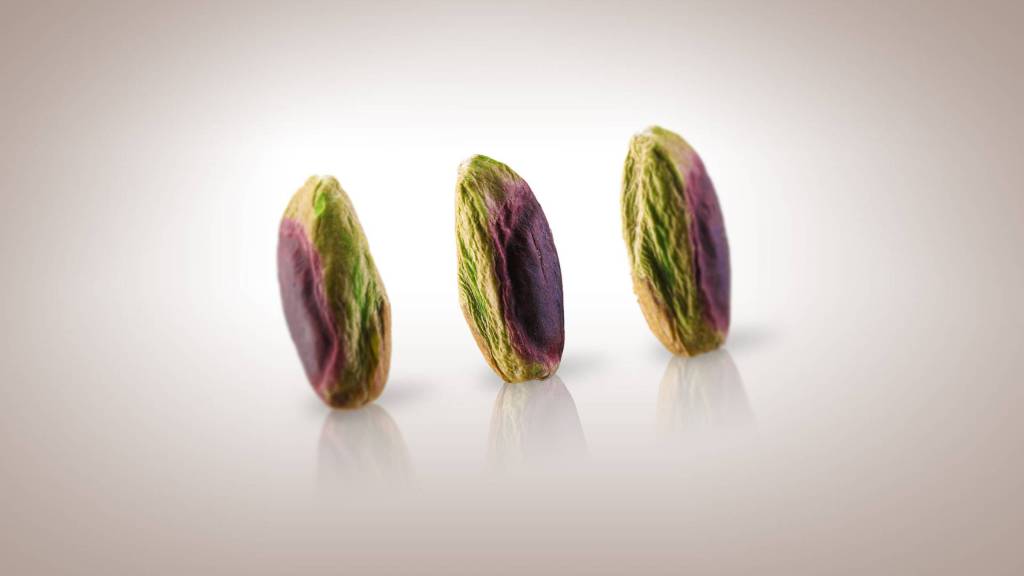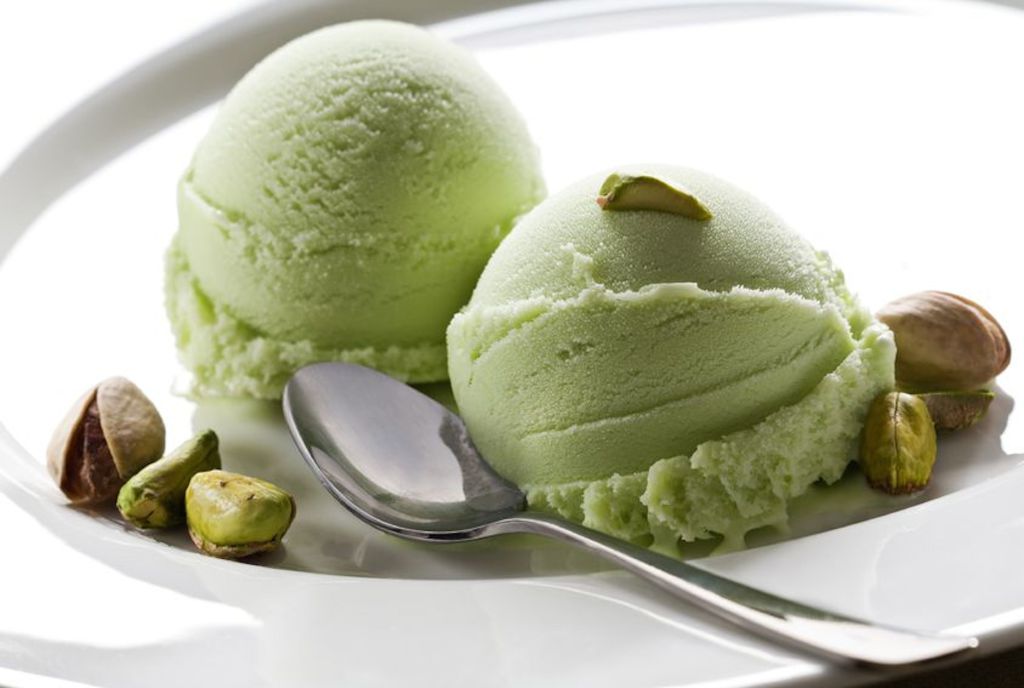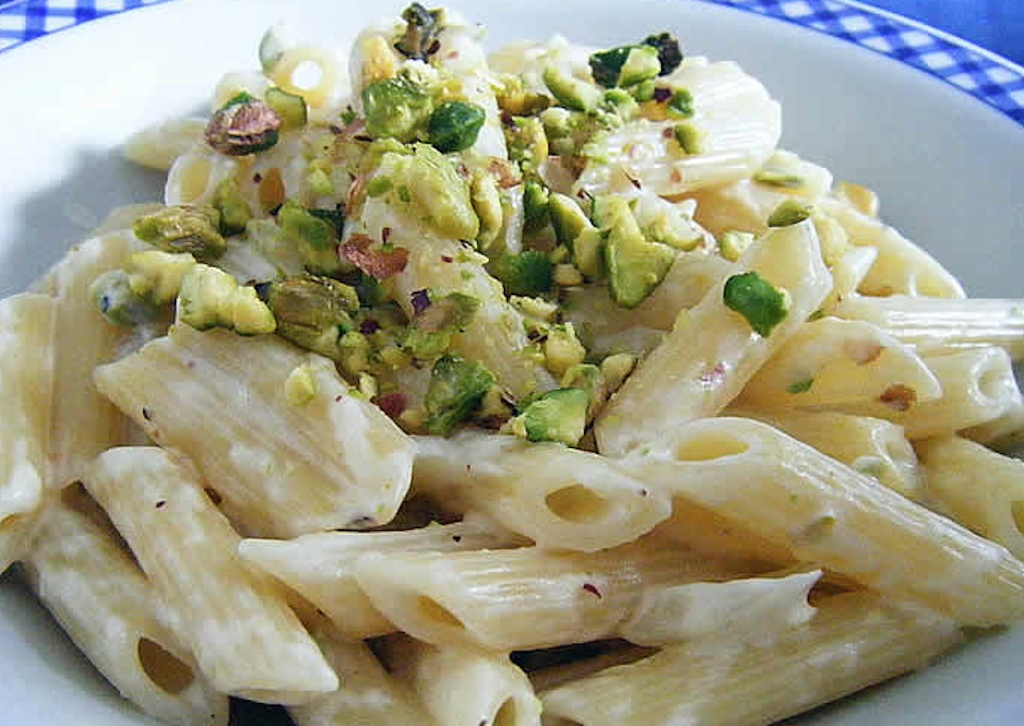 The pistachio is a fruit which boasts a very ancient history. It was already known by Babylonians, Assyrians, Jordanians, Greeks. According to some theories, it comes from Psitacco, a town of Syria. The pistachio tree, twisted, characterized by a reddish bark, which becomes grey when the plant is grown, is widespread in the Middle East, Iran, California, and China, but the one which produces the finest fruits is at Bronte, a municipality on the hills in the Park of Etna.
The pistachio is a fruit which boasts a very ancient history. It was already known by Babylonians, Assyrians, Jordanians, Greeks. According to some theories, it comes from Psitacco, a town of Syria. The pistachio tree, twisted, characterized by a reddish bark, which becomes grey when the plant is grown, is widespread in the Middle East, Iran, California, and China, but the one which produces the finest fruits is at Bronte, a municipality on the hills in the Park of Etna.
The fruit of the 'Pistacchio verde di Bronte' is sweet, delicate, aromatic, characterized by an intense green colour. It is a symbol of a land which withstands the volcano and takes advantage of its fertility. Unlike the products of American or Asian origin, which are mostly yellow-green, the Pistacchio di Bronte is characterized by an intense bright green colour, with very marked aroma and flavour.
The DOP
The Pistacchio di Bronte, always threatened by imports of similar products characterized by far lower quality, has now won the international acknowledgement it deserves: the European symbol of the DOP is associated with the one of the Consortium on packaging and labels, in order to avoid counterfeits. The Protected Designation of Origin concerns an area of production between 300 and 900 metres above sea level regarding the territory of Bronte, Adrano, and Biancavilla. The DOP trademark is associated with the symbol of Etna and a composition of open pistachios, in different shades of green.
In a cool and dry environment, this product keeps its colour for several months. On the other hand after prolonged rest its colour tends to fade. Therefore, the processing industries do not keep stocks of ‘peeled’ product, while just shelled and unpeeled pistachio can be kept in the refrigerator for well over a year.
At Bronte over 30 million quintals of pistachios are collected. This is a wealth of over 20 million Euros, which represents just over 1% of the world production of pistachios, but, as this product is sought after by the finest markets, this production has a great economic and cultural value. 80% of the Pistacchio di Bronte is exported, especially to France, Germany, Switzerland, USA, Japan. The remaining 20% is used in the national industry: 55% in the industry of sausages, 30% in the confectionery industry, and 15% in the industry of icecream. It is marketed in many forms: not shelled, peeled, in grain, as flour, in sticks, sliced, or as pistachio paste. There are almost a thousand manufacturers, most with small and medium-sized plots of land of less than one hectare.
The freshly harvested Pistacchio di Bronte, still covered with its hull, is removed from this natural shell, by means of a simple mechanical friction, and the fruit is then dried in the sun for 2-3 days. When it is deprived of its shell, it shows the typical purplish variegations of its protective film.
When deprived of its thin reddish-purple skin by means of a short exposure to steam at high pressure, dried and brought to a moisture content of 3-4%, the Pistacchio di Bronte shows its true colour, emerald green.
Taste it!
The Pistacchio di Bronte is rich in vitamins, mineral salts, and unsaturated fatty acids, but it also a delicious energetic snack. It is found in many products, ranging from sausage to pasta , from cakes to nougat, icecream, crepes, cheeses, biscuits. It is used for preparing sweets, thanks to its intense colouring and flavour which perfectly combines with sugar, thus giving the best of itself. The Pistacchio di Bronte icecream is green, fragrant, pleasantly sweet and characterized by an intense flavour which remains in the mouth. It is one of the most appreciated icecreams in the world. 
With the Pistacchio di Bronte a liqueur, too, is produced, as well as the famous and delicious ‘pesto’; it is also used as an extract for flavouring coffee.
By means of further subsequent processing, various products are obtained: grains, suitable for decorating and cooking; flour (used in both sweet and salted mixtures or for preparing sauces and creams), and pistachio paste, where this precious fruit, lightly toasted, chopped and refined, becomes a pure paste for preparing icecream or for cooking.
